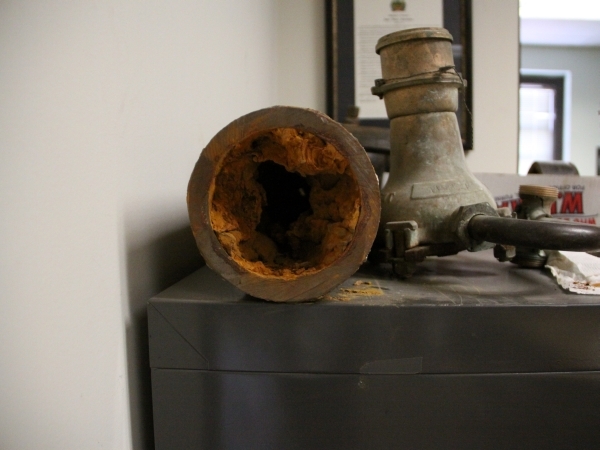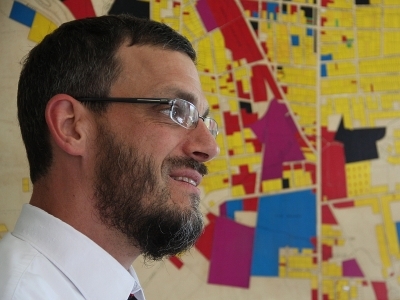
(Host) Vermont cities and towns are struggling to overhaul their aging water systems, and the state says almost every one of them needs some kind of upgrade.
In Rutland, for example, most of the drinking water pipes were installed before 1900. Now those pipes are in desperate need of repair because they’ve failed repeatedly.
But as VPR’s Kirk Carapezza reports, repairs are an expensive proposition.
(Carapezza) Alan Shelvey has worked in Rutland’s Public Works Department for 40 years. He’s now the commissioner, and each day when he comes to work he walks past a display of old pipes.
(Shelvey) "Nowadays what we try to do is keep pieces from water projects that we have."
VIDEO: Rutland’s Commissioner of Public Works shows some of the city’s aging pipes:
(Carapezza) Shelvey says these old, cast iron pipes remind him of what lurks underground.
(Shelvey) "We got samples like this one here. As you can see, it’s pretty much completely plugged with tuberculation. (Carapezza) What is that? (Shelvey) It’s corrosion and this is a reddish color because it’s mostly from iron and it has iron bacteria in it which is not harmful to anybody, but it keeps constricting the flow of the water pipes. It’s just like what happens in a person’s arteries. Over time, it begins to clog the pipes and when it completely clogs the pipes then we have big problems."
(Carapezza) As Rutland tries to create jobs and attract development, it’s those big problems that the city hopes to avoid.
Rutland has more than 30 miles of underground pipes. Many were installed before the Civil War; before marble quarrying began here, and before Rutland became a railroad center.
This summer, Rutland’s Board of Aldermen will consider spending $50 million to replace the pipes over the next 120 years. That means water rates would rise significantly in the next decade.
One quarter of the city’s pipes are considered to be beyond repair now, and Commissioner Shelvey says that number could rise to three-quarters in the next 25 years.
(Shelvey) "which, in municipal terms, is like tomorrow."
(Carapazza) Christopher Louras is Rutland’s mayor. He has another concern: the city’s economy.
 (Louras) "Without our infrastructure we’ll just continue to spin our wheels. We need to invest in ourselves so others will want to invest in Rutland."
(Louras) "Without our infrastructure we’ll just continue to spin our wheels. We need to invest in ourselves so others will want to invest in Rutland."
(Carapezza) It’s the same story across Vermont. Bennington is weighing a water system upgrade that would require an increase in rates by at least 18 percent. Greensboro wants to create a second fire district to qualify for loans for water system upgrades.
(Mears) "I think it would be unusual to find a town in Vermont that didn’t face some substantial costs in terms of upgrading their drinking water infrastructure."
(Carapezza) David Mears is Vermont’s Environmental Conservation commissioner. He says almost every town in the state needs to upgrade its pipes or its treatment system – or both.
(Mears) "They should be looking at what’s the age of their pipes, their treatment systems; how long will it be until they need to be replaced or how much longer do these systems have before they absolutely have to be replaced and build a rate system so that they’ve got the money in the bank when it comes to make these investments."
(Carapezza) There are some state loan programs to ease the burden, but for the most part cities and towns are on their own.
For VPR News, I’m Kirk Carapezza.
In the comments section below, let us know what’s going on in your city or town. Are you part of a community that is struggling to upgrade its water system? Have you recently seen an increase in the cost of clean water?